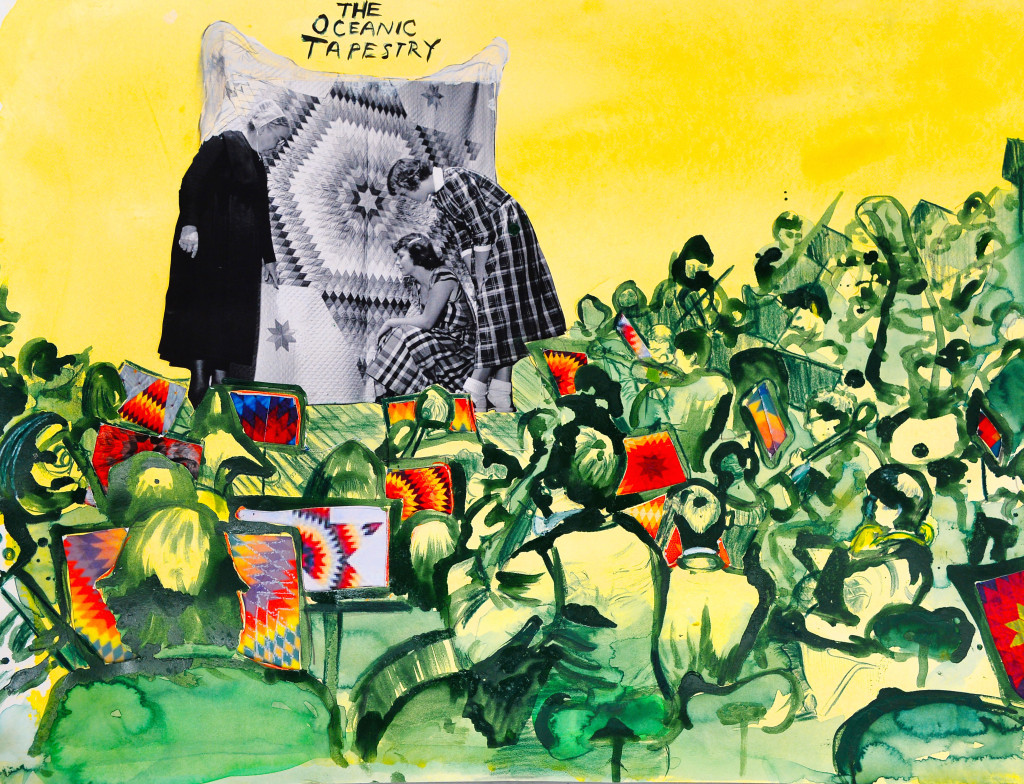Stevie Hanley: Synaesthetica
@ The International Museum of Surgical Science
1524 N. Lake Shore Drive, Chicago, IL, 60610
Opening Thursday, August 13th, from 6PM - 9PM
On view through Sunday, November 15th
Synaesthesia is a neurological phenomenon in which one sense perception elicits the response of another. For example, a “synesthete” might hear a color or taste a smell. For Duke Ellington, a notable synesthete, a “D” note looked like dark blue burlap while a “G” was pale satin. Other notable synaesthetes include Vladimir Nabokov, infamous author of “Lolita” (1955), and the painter Wassily Kandinsky – whose painting practice and mystical artistic philosophy were informed by his unique condition.
It is speculated that synaesthesia may emerge in children engaged with abstraction for the first time. As a young brain is tasked with assigning complex ideas to words, letters of the alphabet or numbers, such characters may become “tinged” or “shaded” by a color or tone. This particular form of the condition, called “Grapheme-Color Synaesthesia,” is the most common. Some studies have suggested that in fact most of us are born synesthetes and lose the sensation around eight months old as the senses are trained and refined with experience; and while pronounced forms of the condition are rare, it is not uncommon to experience some feeling of intermingled or blurred sensory perception at some point in life.
For Chicago-based artist Stevie Hanley, it is these moments of “everyday synaesthesia” that inform the body of work presented here at the International Museum of Surgical Science. Hanley’s practice resists the tidy compartmentalization of experiences, and presents the viewer with objects and installations that have the effect of being a number of things at once. Hanley’s visual field is fractured and reconstituted in dizzying order – to the effect of a beautifully quilted pastel field or compound insect’s eye. As a theme, Hanley’s work is ambivalent – titillating and repellant. A spider crawls across a spongy, neon landscape – a bed of earplugs. While walking his viewer through the alien topography of a bizarre, brightly colored dreamscape, Hanley also manages to evoke the visceral anxiety of violation and invasion: repeated in urban legends of crickets or cockroaches burrowed deep inside the human ear. In the same hand, an orchestra plays a quilt instead of a score. Musicians may be drawn to the texture of a note, as writers may speak to the color of a word. In “Synaesthetica,” Stevie Hanley compiles these crossed experiences as an intricate web of metonymy and double entendres.
This program is presented as part of the Museum’s contemporary arts initiative. The International Museum of Surgical Science supports a commitment to contemporary art and artists through exhibitions and programs that use the frame of contemporary artistic practice to examine new perspectives in surgical science and our relationship to the body.
About the Artist:
Stevie Hanley is a Chicago-based visual artist, whose unique sensibility is informed by his personal history in the Mormon church, where Hanley was forced to undergo an unsuccessful sexual-reorientation therapy. Resultantly, Hanley exercises a dubious relationship to religion – with his work driven by themes of shame and relationships to power. His studio practice is dominated by a fascination with abjection, reimagined as a commingling of vermin and beautifully nebulous pastel abstraction. His use of material is similarly ambivalent. Hanley holds his MFA from the School of the Art Institute of Chicago, and his undergraduate credentials from the University of California, Berkeley. He has exhibited internationally, with notable shows in Berlin. Hanley’s recent exhibitions include shows at the Chicago Artist Coalition (CAC) and FLATS Studio in Chicago.
About the Museum:
The International Museum of Surgical Science was founded in 1954 by Dr. Max Thorek, and is committed to enriching lives by enhancing an appreciation and understanding of the history, development, and advances in surgery and related subjects in health and medicine. The Museum is located in Chicago’s Gold Coast neighborhood, and is housed in a historic lake shore mansion designed in the early 20th century by Howard Van Doren Shaw.
Official Website
More events on this date
Tags: Stevie Hanley, Synaesthetica

« previous event
next event »